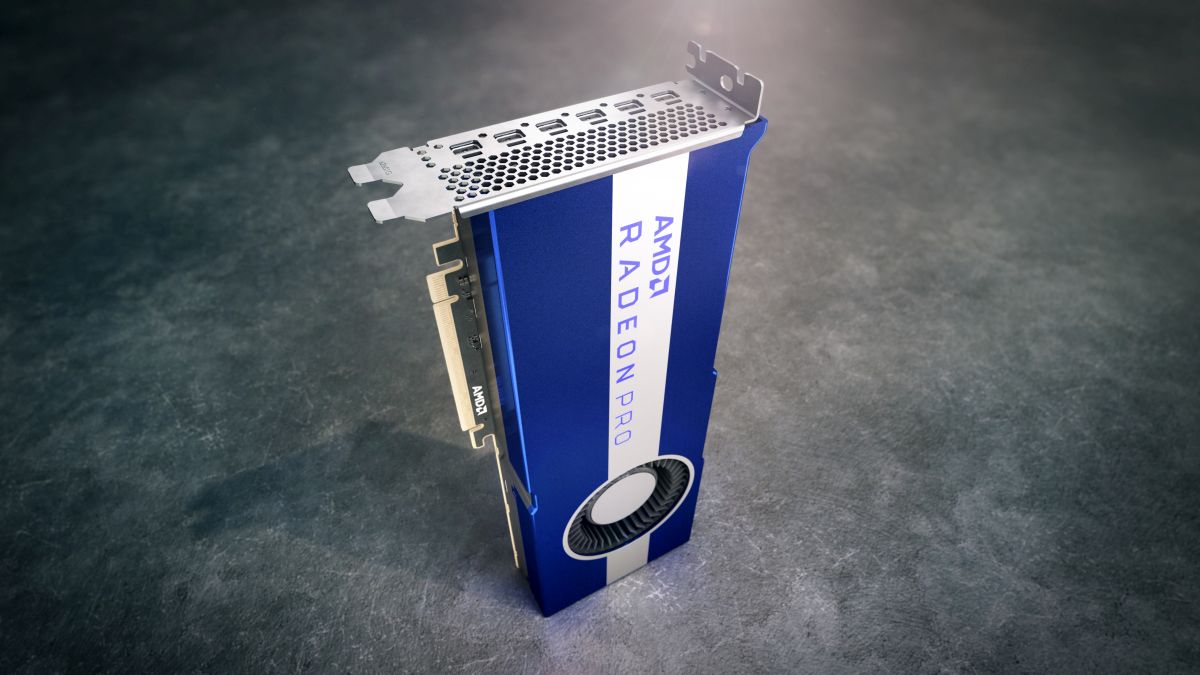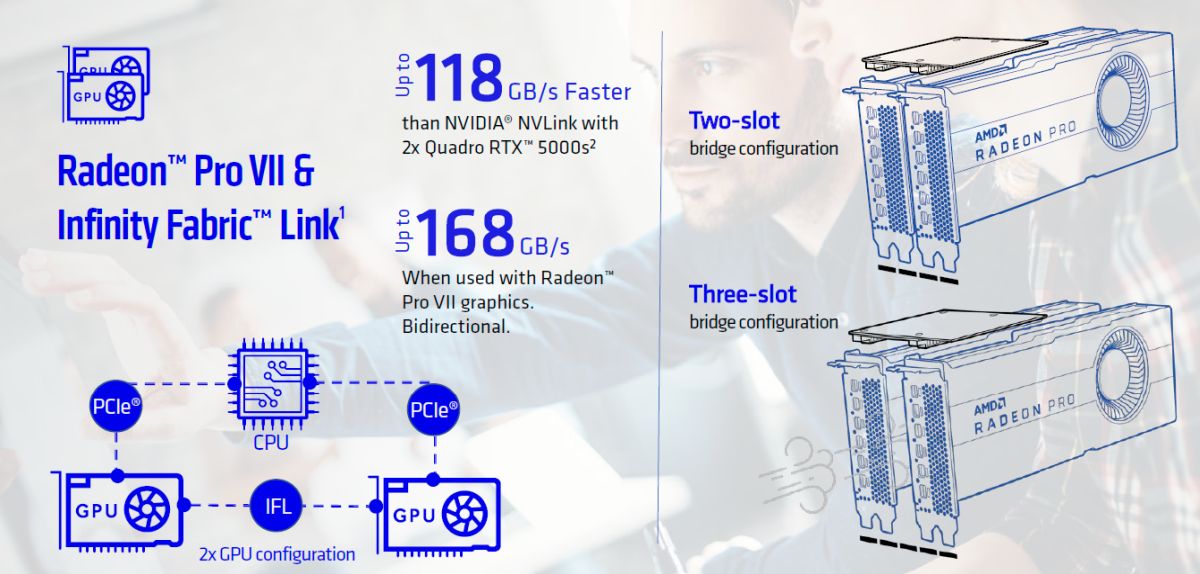Specs-wise, the card carries the same 16GB of HBM2 graphics memory as its non-Pro counterpart, as well as the same 1TB/s memory bandwidth and same Vega GPU architecture as its predecessor. Unlike the Radeon VII, however, AMD has given the Pro version of the card support for PCIe 4.0. Additionally, the card also has 3840 Stream processors, and a 4096-bit memory bus.
In regards to its performance, the Radeon Pro VII is capable of outputting 6.5 TFLOPs of (FP64) and can be paired with a second card via AMD’s Infinity Fabric Link technology, enabling professionals to effectively increase both workload size and efficiency. Having said that, it should be noted that running dual Radeon Pro VII graphics cards means that the cards will be running on PCIe 3.0 x16 bandwidth speeds, albeit at a communication speed of 168GB/s between GPUs. For output, the Radeon Pro VII is capable of supporting up to six synchronised displays in a single setup or a single display at 8K resolution. Moreover, it is capable of doing so with ultra-fast encode and decode support for enhanced multi-stream workflows.
The AMD Radeon Pro VII is expected to be available in the US starting mid-June at a price tag of US$1899 (~RM8214). At the time of writing, AMD did not specify local availability or pricing.

